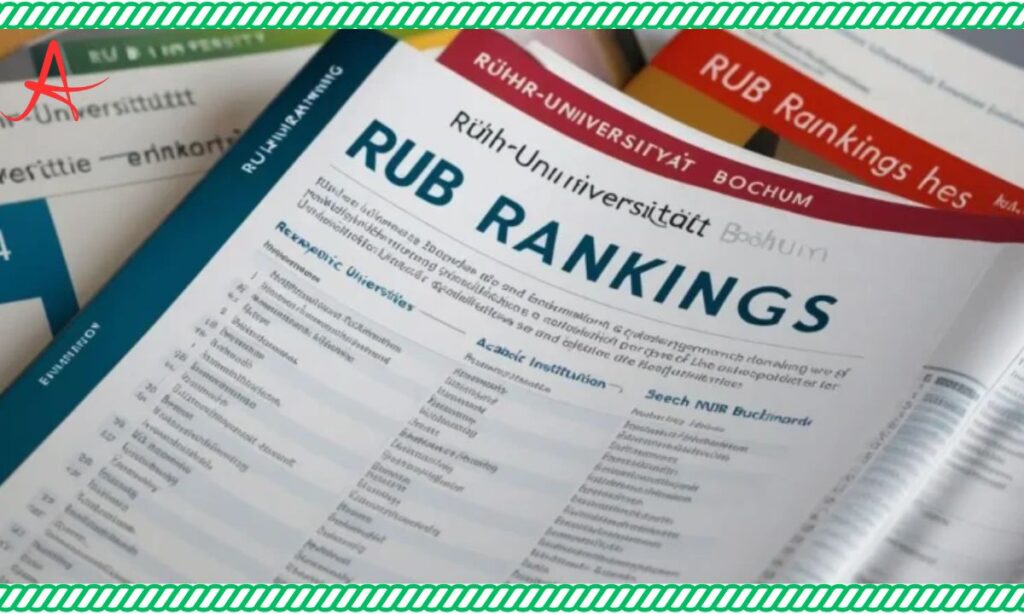RUB Rankings are an important tool in the world of higher education. They help students, educators, and institutions understand where they stand. This guide will explain what RUB Rankings are and why they matter.
Significance of RUB Rankings
RUB Rankings play a crucial role in higher education. They provide a way to compare universities around the world. Students use RUB Rankings to choose where to study. Universities use them to attract students and funding.
RUB Rankings show which schools are doing well. They highlight areas where schools can improve. Governments often use RUB Rankings to make decisions about education funding. For researchers, RUB Rankings can affect their careers. A high-ranking university can open doors to better opportunities. It can also lead to more research funding.
Employers also pay attention to RUB Rankings. They often prefer graduates from highly-ranked schools. This can affect a student’s job prospects after graduation. Overall, RUB Rankings have a wide-reaching impact. They influence decisions at many levels of education and beyond.
Criteria Used in RUB Rankings
RUB Rankings use various criteria to evaluate universities. These criteria aim to measure different aspects of a university’s performance. Here are some key factors:
- Academic reputation: This is often measured through surveys of academics.
- Employer reputation: Employers are asked about the quality of graduates.
- Faculty-student ratio: This measures the level of individual attention students might receive.
- Citations per faculty: This looks at the research impact of the university.
- International faculty ratio: This measures the university’s ability to attract staff from around the world.
- International student ratio: This looks at the university’s ability to attract students from around the world.
Each of these criteria is given a different weight. The exact weighting can vary depending on the specific RUB Ranking being used.
Major Categories in RUB Rankings
RUB Rankings often divide universities into different categories. This helps to compare similar institutions. Here are some common categories:
- Overall Rankings: These rank universities across all areas.
- Subject Rankings: These focus on specific fields of study.
- Regional Rankings: These compare universities within a specific geographic area.
Major Categories in RUB Rankings
| Category | Description | Example |
| Overall | Ranks universities across all areas | World University Rankings |
| Subject | Focuses on specific fields of study | Engineering & Technology Rankings |
| Regional | Compares universities in a specific area | Asian University Rankings |
These categories help users find the most relevant information. A student interested in studying biology, for example, might focus on the subject rankings for life sciences.
Read This Blog: DD Blanchard Photos: Unveiling The Troubled Life Behind The Lens
Top Institutions in RUB Rankings

Certain universities consistently perform well in RUB Rankings. These top institutions often have a few things in common:
- Strong research output
- High-quality teaching
- Good international outlook
- Strong industry connections
Some universities that often appear at the top of RUB Rankings include:
- Harvard University (USA)
- University of Oxford (UK)
- Stanford University (USA)
- Massachusetts Institute of Technology (USA)
- University of Cambridge (UK)
These universities set the standard for others. They often lead in research, teaching, and innovation.
Factors Affecting RUB Rankings
Many factors can influence a university’s position in RUB Rankings. Some of these are:
- Research output: The quantity and quality of research publications matter.
- Teaching quality: This includes factors like class sizes and student satisfaction.
- International outlook: Universities that attract international students and staff often rank higher.
- Industry income: Collaborations with industry can boost a university’s ranking.
- Citations: How often a university’s research is cited by others is important.
Universities need to perform well across all these areas to achieve a high ranking. Improving in one area while neglecting others is unlikely to significantly boost overall rankings.
How Institutions Can Improve Their RUB Rankings?
Universities can take several steps to improve their RUB Rankings:
- Invest in research: Encouraging and supporting high-quality research can boost rankings.
- Improve teaching quality: This might involve hiring top professors or improving facilities.
- Increase international collaborations: Partnering with universities abroad can help.
- Enhance student services: Happy students often lead to better rankings.
- Build industry connections: Strong links with industry can improve a university’s reputation.
It’s important to note that improving rankings takes time. Universities should focus on long-term strategies rather than quick fixes.
Also Read This Blog: Baek XX Chapter 55: A Deep Dive into the Intriguing Developments
Criticisms and Controversies of RUB Rankings
While RUB Rankings are widely used, they’re not without criticism. Some common concerns include:
- Over-emphasis on research: Some argue that teaching quality isn’t given enough weight.
- Bias towards English-speaking institutions: Universities where English isn’t the main language may be at a disadvantage.
- Encouraging uniformity: Universities might focus on ranking criteria at the expense of unique strengths.
- Ignoring local context: What makes a university “good” can vary by country or region.
- Fluctuations in rankings: Small changes in scores can lead to big shifts in rankings, which some see as unreliable.
These criticisms highlight the need to use RUB Rankings as one tool among many when evaluating universities.
Future Trends in RUB Rankings

RUB Rankings are likely to evolve in the coming years. Some potential trends include:
- More focus on employability: Rankings may put more weight on graduate outcomes.
- Emphasis on innovation: Universities’ contributions to innovation might be more important.
- Sustainability measures: Environmental and social impact could become key factors.
- Online education: As online learning grows, rankings may adapt to measure this.
- Customizable rankings: Users might be able to adjust criteria weights based on their priorities.
These trends could make RUB Rankings more comprehensive and user-friendly in the future.
Frequently Asked Questions
What exactly are RUB Rankings?
RUB Rankings are systems that evaluate and rank universities based on various criteria.
How often are RUB Rankings updated?
Most RUB Rankings are updated annually, though some may have more frequent updates.
Are RUB Rankings the same worldwide?
While some RUB Rankings are global, others focus on specific regions or countries.
How reliable are RUB Rankings?
RUB Rankings provide useful insights, but they shouldn’t be the only factor in decision-making.
Can universities influence their RUB Rankings?
Universities can improve their rankings by enhancing their performance in key areas measured by the rankings.
Conclusion
RUB Rankings play a significant role in the higher education landscape. They provide valuable information for students, institutions, and policymakers. However, it’s crucial to use them wisely, understanding both their benefits and limitations.
RUB Rankings can guide decision-making, but they shouldn’t be the only factor. Each student’s needs are unique, and the “best” university overall might not be the best fit for everyone. Similarly, universities should strive for overall excellence rather than just improving their rankings.

Fatima is a talented content writer and digital marketer with expertise in SEO, social media management, and online marketing. She excels at creating impactful, data-driven content to help businesses connect with their target audience and achieve measurable outcomes.





